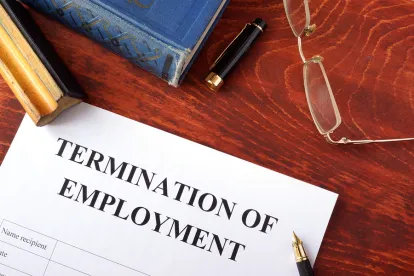An unfortunate byproduct of the COVID-19 pandemic is terminations. Many employers who have the resources provide a cushion in the form of severance pay. It is prudent to seek a release of claims in exchange for the payment of severance and critical to have the right form of release agreement. Note that there might be state-specific requirements. This refresher addresses only federal law.
Employees Less Than 40 Years of Age
A release of claims in exchange for severance not otherwise owed to the employee will be valid if the employee is permitted a reasonable opportunity to review and consider the release agreement. As with any release, the agreement must be voluntary and the employee must be competent to enter into a contract.
Individual Employees 40 or More Years of Age
While releases of most claims fall under the standards applicable to employees who are less than 40 years of age, in order to release federal age discrimination claims, the release must comply with the requirements of the Older Workers Benefit Protection Act (OWBPA) and its regulations. At a minimum, the waiver must be written in a manner that can be readily understood, must advise the employee to consult with an attorney prior to executing the agreement and may not waive future rights. It also must provide the employee at least 21 days to consider the agreement and seven days to revoke acceptance. Once the revocation period expires, the agreement will be effective.
Groups of Employees That Are 40 or More Years of Age
This is where it becomes tricky. The OWBPA considers a group to be two or more employees who are provided release agreements. Generally, it involves employees whose employment is terminated either voluntarily or involuntarily with respect to a common circumstance such as an economically driven reduction in force. While many of the requirements for an individual 40 or more years old carry over (such as advising the employee to consult with an attorney and providing a seven-day revocation period), the release agreement also must afford the employee at least 45 (rather than 21) days to consider the terms and also must include language specifying:
(i) Any class, unit, or group of individuals covered by such program, any eligibility factors for such program, and any time limits applicable to such program; and
(ii) The job titles and ages of all individuals eligible or selected for the program, and the ages of all individuals in the same job classification or organizational unit who are not eligible or selected for the program.
Employers must give considerable thought to properly describing the “class, unit, or group of individuals covered by such program [the severance and release],” known as the “decisional unit.” The decisional unit essentially is the pool of employees from which the employer selects those subject to termination and thus participate in the separation program. The OWBPA regulations provide examples of potential decisional units. The jeopardy is that selecting a patently inappropriate decisional unit will void the waiver of age discrimination claims.
Conclusion
In addition to financially assisting employees who lose their jobs because of economic factors, employers need to be confident that employees who accept the severance pay cannot maintain a valid lawsuit claiming age discrimination. Since failure to strictly comply with the OWBPA will result in the waiver of age discrimination claims being void, it is critical that the release agreement follow the rules.



 />i
/>i

